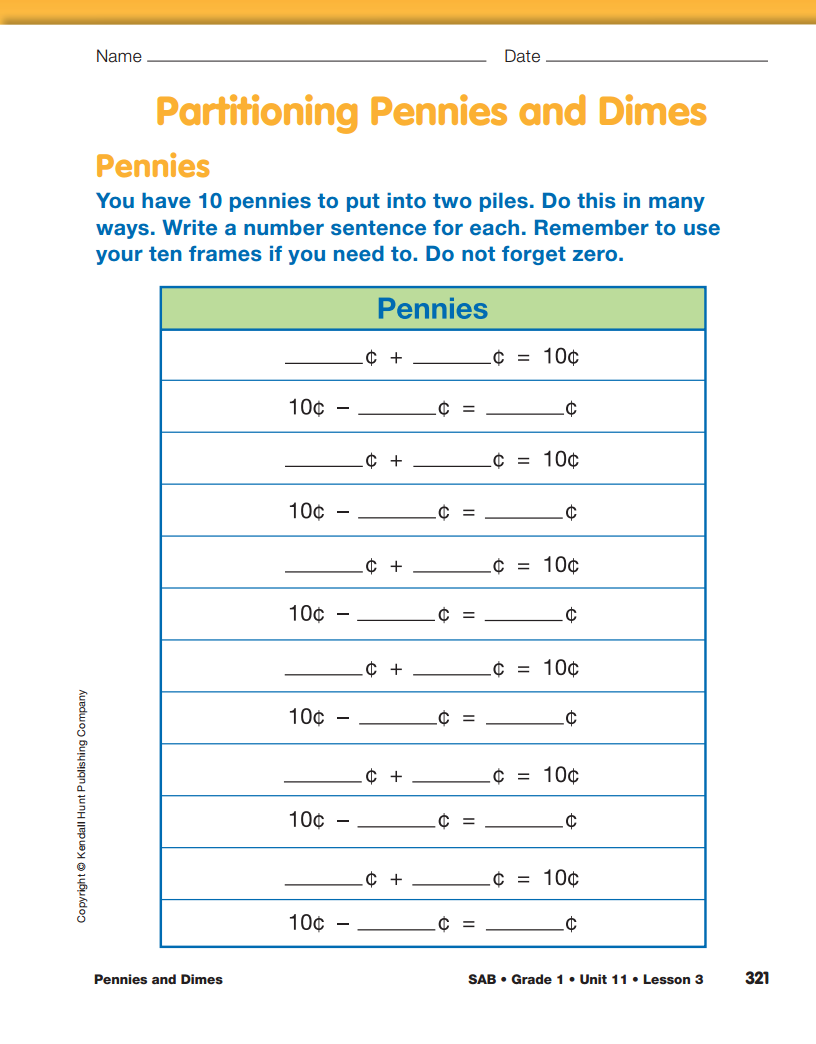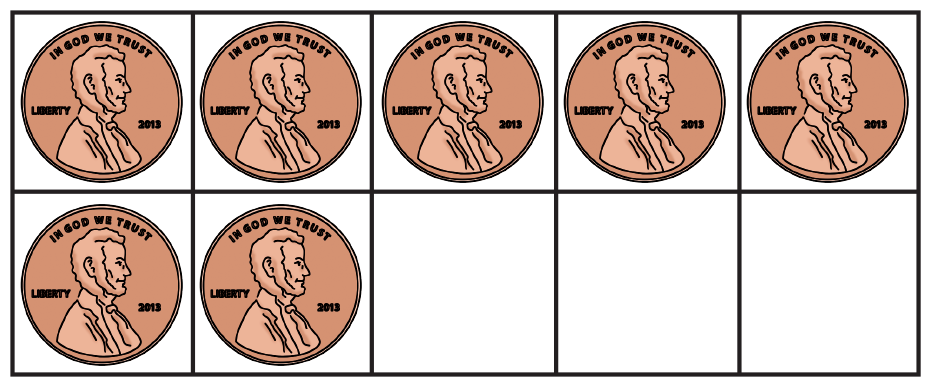Pennies and Dimes
Est. Class Sessions: 1–2Developing the Lesson
Part 1: Partitioning 10 Pennies
Review Partitions of Ten and Fact Families. Using a display of the Ten Frames page from the Student Activity Book Reference section and a display set of pennies, quickly review partitioning ten. Ask students to generate both an addition and a subtraction number sentence to describe the partitions.
As shown in Figure 1, place 7 pennies in the ten frame and ask:
Because of their earlier work, students should be
able to recognize all the partitions fairly easily.
Comment that even though they are using money,
the process is exactly the same. The only difference
is that here they are counting pennies, rather than
puppies or cookies, etc. Show the cents notation (¢)
and explain that this sign signifies that a person is
counting pennies. When reading it, they say "cents"
as in "10 cents," which means the same as
10 pennies.
For example, write 7¢ + 3¢ = 10¢ and
10¢ − 7¢ = 3¢.
Partition 10 Pennies and Write Number Sentences. Direct students' attention to the Pennies section of the Partitioning Pennies and Dimes pages in the Student Activity Book. Distribute a set of ten pennies to each student pair. Tell students that they are going to put the ten pennies into two piles in many ways. Point out that in some of the questions on the page, they will write addition number sentences and in others they will write subtraction sentences to describe the ways they divided the pennies. Remind them to think about fact families and to use the Ten Frames page in the Student Activity Book Reference section.














